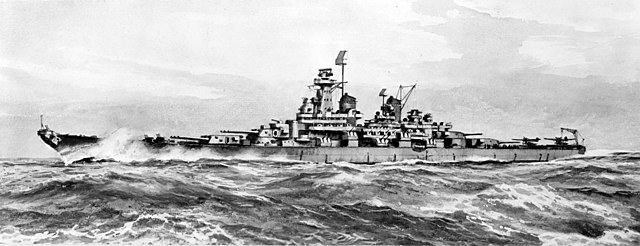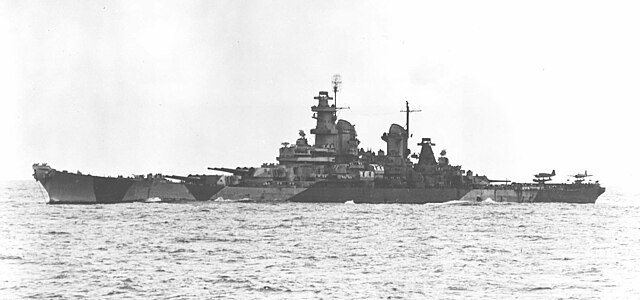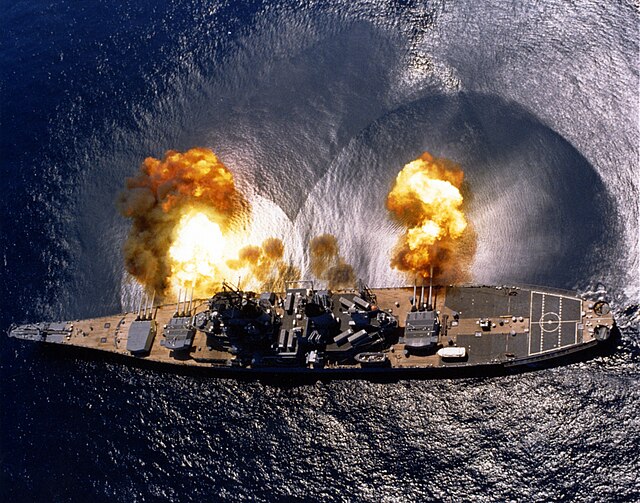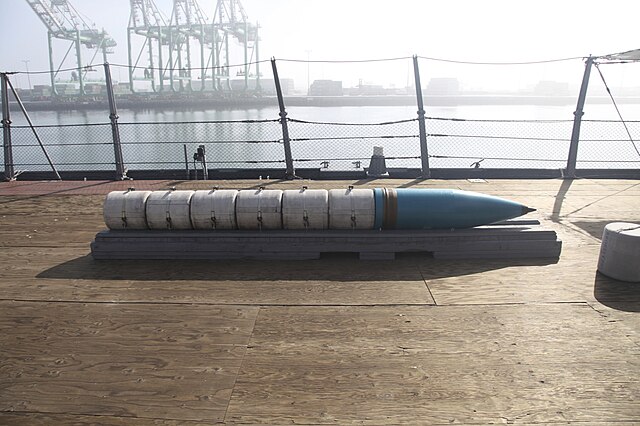The Montana-class battleships were planned as successors of the Iowa class for the United States Navy, to be slower but larger, better armored, and with superior firepower. Five were approved for construction during World War II, but changes in wartime building priorities resulted in their cancellation in favor of continuing production of Essex-class aircraft carriers and Iowa-class battleships before any Montana-class keels were laid.
USS Missouri of the Iowa class, the predecessors of the Montana class
1940 study plan, BB-65 Scheme 4 (BB 65-4)
One variant of the fast BB 65-8 design scheme from 1940
An artist's impression of the Montana class
The Iowa class was a class of six fast battleships ordered by the United States Navy in 1939 and 1940. They were initially intended to intercept fast capital ships such as the Japanese Kongō class and also serve as the "fast wing" in a traditional battle line alongside slower battleships. The Iowa class was designed to meet the Second London Naval Treaty's "escalator clause" limit of 45,000-long-ton (45,700 t) standard displacement. Beginning in August 1942, four vessels, Iowa, New Jersey, Missouri, and Wisconsin, were completed; two more, Illinois and Kentucky, were laid down but canceled in 1945 and 1958, respectively, before completion, and both hulls were scrapped in 1958–1959.
USS Iowa (BB-61) fires a full broadside on 15 August 1984 during a firepower demonstration after her recommissioning
USS Iowa in World War II configuration and wearing Measure 32 Design 1B camouflage pattern, c. 1944.
USS Iowa fires a full broadside of nine 16-inch and six 5-inch guns during a gunnery exercise
16"/50 gun projectile with six propellant bags (display) aboard USS Iowa (BB-61)








